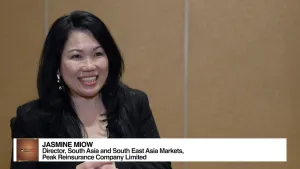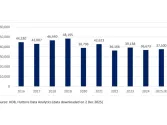
With Asia’s population getting older, the insurance industry has a chance to step up
By Bernhard KotankoInsurers need to shift to recognise ageing as opportunity rather than challenge.
Some events that affect the insurance industry, such as floods or fires, happen all of a sudden. Others are more like tectonic plates—immensely powerful, but slow-moving. Asia’s changing demographics are one of these.
All across the region, birthrates are falling. South Korea has the world’s lowest, just 0.75 births per woman, much less than the 2.1 rate that would stabilise the population.
Even though China officially ended its one-child policy in 2015, the reality is that having a single child is still the norm, with a fertility rate of 1.01; its overall population is declining. In Southeast Asia, too, the trends are similar, with Malaysia, Singapore, Thailand, and Vietnam all below the replacement rate, and India and Indonesia just about hitting it.
At the same time, life expectancy has jumped everywhere, as a result of better health care and higher quality of life.
But there are consequences. One very critical thing is that, as Asia ages with a lower replacement ratio, people will be in retirement for longer. Yet, many retirement systems are not ready for it. Nor are millions of people.
In 2021, a global insurer estimated the region’s major emerging markets - China, India, Indonesia, Malaysia, Philippines, Thailand, Vietnam - were looking at a pension savings shortfall of $74t, or $50,000 per worker. And in some Asian countries, most of the population doesn’t have a pension at all.
And that is where the insurance industry comes in: Insurers can help narrow the region’s retirement gaps by offering innovative financial solutions for retirement and annuity income, and expand protection for health, long-term care, and longevity.
Yet, as of today insurers are not successful in narrowing retirement and protection gaps. And they don’t seem committed to serve elderly customers and to innovate propositions for ageing-related needs which may require stretching their risk appetite, their innovation capacity, and their service capabilities.
Insurers need to shift to recognise ageing as opportunity rather than challenge and commit to serve the elder segment and their needs.
Regulatory and public social systems are equally important to enable and incentivise retirement savings and support innovation for private protection for ageing-related risks. There may also need to be intervention to make products more affordable in public-private partnerships and through targeted incentives, as today options for customers are not necessarily appealing and people rather rely on cash savings and “self-insurance”.
Asian insurers can also learn from the experiences of other markets.
For example, a major European insurer offers substantial flexibility for its retirement products, in terms of payment and payout options, including no-penalty withdrawals. Consumers looking for higher returns may be more willing to consider such products.
In higher-income Asian countries, it may be worth experimenting with ways to work with retirees as they spend down their assets, such as reverse mortgages. These allow retirees to convert their home into stable monthly income which could help older people cover any income gaps. Asia accounts for only about 10% of the global market.
Because insurance is a service, knowledge and engagement are key, and that means people. Insurers need to educate their agents and advisers on retirement and train a pool of specialists.
These experts, in turn, can better inform customers in Asian markets, many of whom are new to how retirement and ageing-related protection products work. Insurers can support these specialists by providing training materials and market insights.
Finally, insurers don’t need to do everything themselves. Collaborating with entities that may be more accustomed to working with older populations.
For example, an insurer that wants to sell retirement savings products could partner with a senior-living provider to offer benefits alongside, or instead of, traditional monthly retirement payouts. This way, customers could save for retirement and, when they retire, receive both a monthly income and access to housing.
Similarly, as insurance and asset management are converging, such partnerships can use life insurance books to build differentiated asset management and find new ways to create value. They could also work together to offer products that adjust over retirement phases.
For insurers, this has the advantage of developing long-term relationships; for consumers, it enhances the quality of financial planning and solutions.
Putting these parts together we could see an insurance industry truly addressing the consequences of an ageing society and benefit from its enormous growth potential:
By 2050, people over 60 are expected to account for 25% of the population in the Asia-Pacific, up from 14% in 2020. And this segment represents the largest personal financial assets pool.
Insurance is needed more than ever to serve this large and valuable segment. And to unlock its growth potential.




















 Advertise
Advertise






